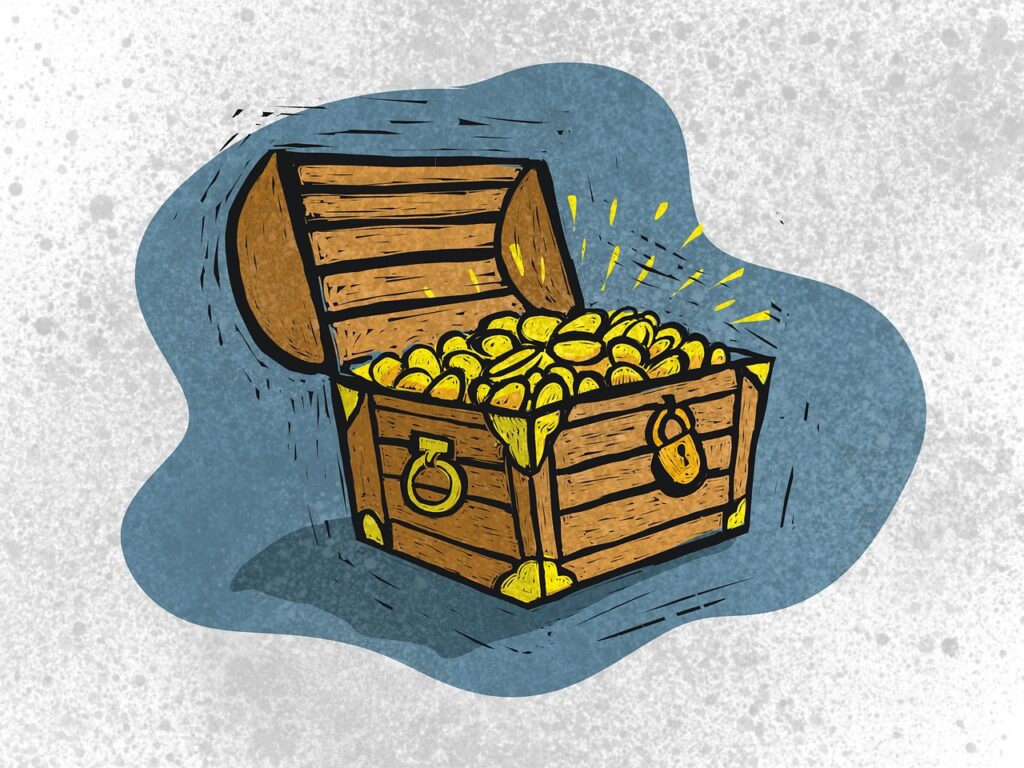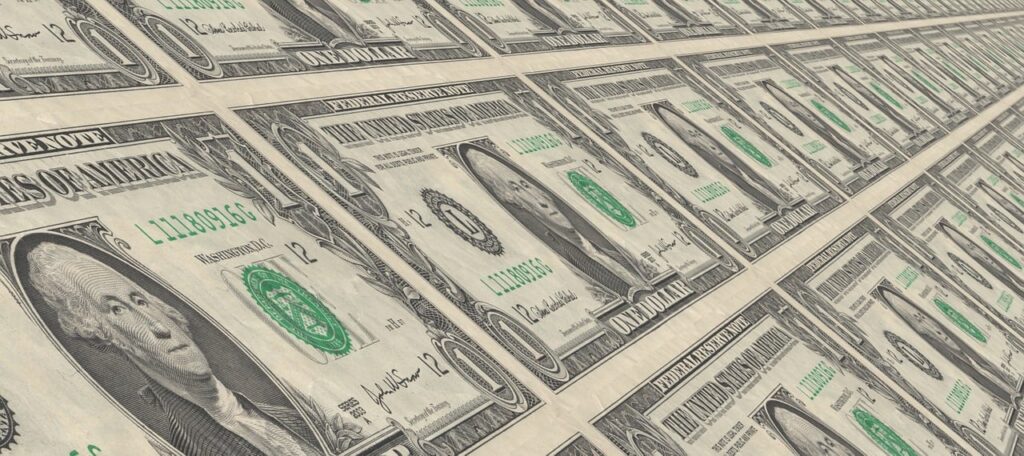
The U.S. financial landscape has been jolted by the sudden and dramatic collapse of Tricolor Holdings, a prominent subprime auto lender and used-car retailer. This abrupt downfall saw 65 U.S. car dealerships vanish almost overnight, sparking a $200 million fraud probe that has sent shockwaves through the banking sector and left thousands of employees and customers in disarray. The event underscores a critical moment for the high-risk lending market, raising questions about oversight and the stability of an industry serving some of the nation’s most vulnerable borrowers.
At the heart of this unfolding crisis are allegations of an extensive loan fraud scheme, which federal authorities are now actively investigating. This situation extends far beyond a single company’s failure; it highlights profound interconnections between subprime auto lending and mainstream banking, drawing major institutions like Fifth Third Bank, JPMorgan Chase, and Barclays into a vortex of potential losses. The repercussions are already materializing, impacting credit markets and forcing a reassessment of risk across various lending relationships.
This in-depth analysis delves into the specifics of Tricolor’s implosion, examining the nature of the alleged fraud, its immediate impact on stakeholders, and how this event is distinct from previous financial crises. We will explore the company’s unique business model, the human cost of its bankruptcy, and the broader implications for the subprime auto lending sector. Understanding these facets is crucial for comprehending the ‘new baseline’ of institutional due diligence that is now emerging.
1. **The Sudden Collapse of Tricolor Holdings: A Chapter 7 Declaration** The financial world witnessed a seismic event on September 10, 2025, when Tricolor Holdings filed for Chapter 7 bankruptcy in Texas. This was not a move to reorganize and emerge stronger, but a definitive declaration of intent to liquidate its entire operations. Such a filing signals a complete winding down of business, reflecting an inability to continue operations under existing financial pressures and legal scrutiny.
The sheer scale of this collapse is staggering. Court filings indicate that Tricolor’s assets and liabilities are both estimated to be in the range of $1 billion to $10 billion. This places it among the largest and most impactful bankruptcy cases in the auto finance sector in recent years. The company’s main website abruptly went offline around the time of the filing, further cementing the suddenness of its demise and the finality of its liquidation path.
The ramifications of this swift shutdown have been immediate and widespread. Thousands of borrowers and bank creditors have been directly affected, facing uncertainty over loans, vehicle ownership, and financial recovery. The closure of 65 dealerships across Texas, California, and other states has left physical storefronts deserted, gates locked, and local economies disrupted, highlighting the deep operational cessation that accompanies a Chapter 7 liquidation.
This decision to pursue Chapter 7, rather than the more common Chapter 11 reorganization, underscores the severity of the company’s financial distress and the alleged collateral gaps that came to light. It suggests an absence of a viable path forward for the business, and perhaps an unwillingness from lenders to bridge the massive funding hole that emerged. The rapid nature of the liquidation has exacerbated the challenges for all parties involved, from employees to major institutional creditors.
The formal appointment of a trustee will now commence the arduous process of overseeing the liquidation of Tricolor’s remaining assets. This trustee’s role will be to manage the sale of these assets and distribute the proceeds among creditors, although it is widely anticipated that creditors will not recover the full value of their claims. The move marks a definitive end to what was once a prominent player in the U.S. used car market, leaving a significant void and a trail of questions.

2. **Allegations of a $200 Million Loan Fraud Scheme** At the very core of Tricolor’s dramatic collapse lie serious allegations of an extensive $200 million loan fraud scheme. These accusations paint a picture of deliberate financial misrepresentation and potentially deceptive practices. Investigations suggest that the company may have engaged in the egregious act of pledging the same collateral across multiple loans, a practice known as double-pledging.
Further scrutiny indicates that Tricolor may have overstated its financial strength in official filings and audited financial statements. Such actions would not only mislead investors and lenders but could also constitute a profound breach of trust and regulatory compliance. These alleged manipulations of financial reporting are central to the federal probes now underway, with the U.S. Department of Justice (DOJ) having already launched its own investigation.
The first public disclosure of this alleged fraud came from Fifth Third Bank, a major creditor with significant exposure to Tricolor. The bank reported impairment charges of up to $200 million due to what it termed “external fraud” linked to Tricolor’s asset-backed loan facilities. This revelation quickly intensified scrutiny on Tricolor’s financial practices and served as a catalyst for wider investigations by federal authorities.
The fraud allegations specifically center on the integrity of the collateral underlying the company’s warehouse lines of credit. These lines are crucial short-term financing mechanisms that allow lenders to originate loans before bundling and selling them to investors. If the collateral—in this case, the auto loans themselves—was indeed pledged multiple times or misrepresented, it suggests a fundamental breakdown in financial controls and ethical conduct within Tricolor.
Such a scheme, if proven, would not only explain the swiftness of the Chapter 7 filing but also the reluctance of institutional lenders to support a reorganization. The ‘double-pledging’ of collateral implies a severe deficiency in the promised security for the loans, creating a massive funding gap that proved insurmountable. This revelation has profound implications for how institutional capital assesses risk in the alternative lending sector moving forward.
3. **The Immediate Impact on Major Banks and Creditors** The fallout from Tricolor’s bankruptcy is reverberating powerfully across the U.S. banking sector, particularly impacting several major financial institutions. These banks, which acted as ‘warehouse lenders,’ provided the crucial short-term financing that enabled Tricolor to originate its extensive portfolio of auto loans. Now, they are bracing for substantial losses as the company liquidates.
Fifth Third Bank, for example, has confirmed its significant exposure and expects impairment charges of up to $200 million directly attributable to the alleged fraud. This substantial hit underscores the direct financial consequences for even diversified financial giants when a key borrower collapses under such circumstances. The bank’s CEO, Tim Spence, confirmed this exposure and the bank’s cooperation with law enforcement, signaling a potentially prolonged legal battle to recoup losses.
JPMorgan Chase and Barclays also face substantial risks as secured lenders listed among Tricolor’s creditors. While specific figures for their potential losses were not immediately quantified, estimates indicate similar levels of exposure and financial strain. These major institutions are now deeply entangled in the liquidation proceedings, navigating complex legal and financial pathways to minimize their ultimate losses.
Beyond the major players, numerous regional banks and over 25,000 creditors have been caught in the crossfire. Origin Bank, for instance, disclosed nearly $30 million in commitments tied to Tricolor, which now face considerable uncertainty. This broad exposure highlights the profound and intricate interconnection between specialized subprime auto lending and the mainstream banking ecosystem, revealing how risks in one segment can quickly ripple through the entire financial system.
Many of these impacted creditors include small businesses and local lenders, for whom these substantial financial losses could be devastating. The complex process of recovering losses through Chapter 7 liquidation is often lengthy, and it is widely understood that creditors are unlikely to receive the full value of their claims. This widespread financial disruption underscores the significant systemic impact of Tricolor’s failure on a diverse array of financial stakeholders.
4. **Tricolor’s Unique Business Model and Vulnerable Clientele** For years, Tricolor Holdings carved out a distinctive niche in the U.S. auto finance market, positioning itself as a vital lender for underserved borrowers. Its business model was explicitly designed to cater to individuals with limited or no credit history, often those overlooked by traditional banks. This included a significant focus on immigrant and low-income communities, providing them with access to vehicle financing that might otherwise be unattainable.x
The company operated across Texas, California, and four other states, expanding its reach under well-known brands such as Tricolor Auto, Ganas, and Ganas Ya. By mid-2025, this strategy had enabled the company to originate over $5 billion in auto loans. This impressive growth trajectory was built on addressing a genuine market need, providing mobility and economic opportunity to a diverse clientele who required specialized lending solutions.
However, the very lending practices that fueled Tricolor’s rapid expansion also inherently carried heightened risks. Specializing in subprime auto loans, particularly for customers without Social Security numbers or established credit histories, meant operating in a segment characterized by higher default rates. While intended to serve a vulnerable population, these practices ultimately left both the borrowers and the financial institutions backing Tricolor increasingly exposed.
The company’s focus on deep subprime borrowers, a segment accounting for less than 2% of the overall auto loan market, placed it squarely in the riskiest tier. This demographic, while deserving of financial access, often comes with greater challenges in credit assessment and repayment predictability. The balance between inclusive lending and robust risk management proved to be a precarious one for Tricolor, ultimately contributing to its downfall.
The collapse now leaves these particularly vulnerable borrowers facing immense uncertainty. Many of them, often undocumented immigrants, are at risk of vehicle repossession and losing access to auto financing. The company’s unique approach, while facilitating significant loan origination, ultimately failed to adequately safeguard the interests of its clientele and its financial partners, leading to widespread distress within these communities.

5. **Broader Concerns for Subprime Auto Lending Stability** Tricolor’s dramatic failure has ignited broader concerns about the overall stability and health of the subprime auto lending sector. This single collapse has functioned as a potent alarm bell, prompting regulators and industry observers to question the adequacy of oversight and risk controls within this high-risk market segment. The allegations of duplicated collateral and falsified reporting point to potential systemic weaknesses that could extend well beyond one company.
Regulators and industry analysts are warning that Tricolor’s bankruptcy may not be an isolated incident but rather the precursor to a much deeper examination of lending standards and risk management practices. This scrutiny will likely target the entire ecosystem of high-risk auto financing, seeking to identify and address any pervasive vulnerabilities. The event highlights growing fragility in an industry built on serving higher-risk borrowers, suggesting that previous assumptions about market resilience may need recalibration.
While Tricolor’s failure is significant, it is generally not expected to trigger a systemic financial crisis on the scale of the 2008 mortgage collapse. Expert analysis suggests that the auto loan market is substantially smaller and less leveraged than the housing market of that era. However, it is widely anticipated that major lenders will now tighten their standards for subprime auto loans in response, making credit harder to obtain for many high-risk borrowers.
This reevaluation of risk is already manifesting in the market. The ‘specter of second-order risk across similar warehouse lines’ is very real, leading to increased apprehension about the stability of underlying collateral. Investors and banks are recalibrating their assumptions on loss timing, recoveries, and servicer behavior. This will likely result in a more conservative posture towards potentially risky car loans across the board, even for well-managed alternative lenders.
The long-term consequence will be a market that ‘prices and polices itself more rigorously.’ This means a fundamental shift in how risk is perceived and managed, pushing for greater transparency and more robust controls across the subprime auto finance industry. Tricolor’s collapse is forcing a crucial moment of reckoning, prompting a reevaluation of lending practices that could redefine the sector for years to come.
6. **The Human and Economic Toll: Dealership Closures and Mass Layoffs** The immediate aftermath of Tricolor’s bankruptcy filing brought with it a stark human and economic toll, particularly evident in the communities where its operations were concentrated. The abrupt closure of 65 dealerships across key states like Texas and California left thousands of employees facing unexpected and immediate job loss, plunging them into sudden economic uncertainty.
According to Univision, a significant portion of Tricolor’s workforce—approximately 80% to 90%—was furloughed almost overnight. This massive wave of layoffs affected thousands of individuals, many of whom received minimal notice about the impending changes. Reports also indicate that some former employees are still awaiting final paychecks and critical information regarding severance packages, adding to their distress during this challenging period.
Beyond the employees, the rapid and extensive shutdown disrupted local economies that relied on these dealerships for jobs and tax revenue. The sight of numerous storefronts closed, with gates locked and no clear information, created a palpable sense of unease and instability within these communities. The economic ripple effects extend beyond the auto sector, potentially affecting regional employment figures and consumer confidence in the areas Tricolor served.
Customers, many of whom belong to financially vulnerable groups, also faced considerable frustration and uncertainty. With dealerships suddenly shuttered, they struggled to obtain vital information about their existing vehicle loans or the status of their vehicles. Attempts to reach company representatives often went unanswered, fueling anxiety and leaving many in a state of confusion about how to proceed with their financial obligations and vehicle ownership.
This situation underscores the tangible, ground-level impact of a major corporate collapse, particularly one involving a company that served a clientele often reliant on their vehicles for work and daily life. The sudden disappearance of Tricolor’s operations has left a vacuum of services and support, placing an additional burden on individuals already navigating challenging economic circumstances.
7. **Why This Is Not a Repeat of the 2008 Subprime Mortgage Crisis** Despite the dramatic scale of Tricolor’s collapse, industry experts are quick to clarify that this event is fundamentally different from the 2008 subprime mortgage crisis. It is not expected to trigger a systemic financial meltdown akin to the one that nearly brought the U.S. economy to its knees. Understanding these distinctions is crucial to accurately assess the current situation without unwarranted panic.
A primary difference lies in market size. The entire auto loan market, though substantial, is only a fraction of the home mortgage market. According to the Federal Reserve, total car loan balances stood at $1.7 trillion as of June, compared to a colossal $12.9 trillion for mortgage loans. This disparity in scale means that even large-scale defaults in auto lending would have a considerably smaller aggregate impact on the broader financial system.
Furthermore, auto loans are generally ‘not as leveraged’ as mortgages were leading up to 2008. While Tricolor bundled its loans, the practice of creating highly complex, interconnected securities that obscured risk was far more pervasive and systemic in the mortgage market. The ‘toxic assets’ of 2008, largely comprised of mortgage-backed securities, posed a greater threat due to their intricate bundling and widespread institutional ownership.
Crucially, the underlying assets themselves behave differently. Mortgage lenders in 2007-2008 relied on rising home prices to offset bad loans. When the housing bubble burst, asset values plummeted, exacerbating losses. Cars, however, are depreciating assets. As law professor Pamela Foohey notes, subprime auto lenders often *expect* borrowers to default, with a plan to repossess and resell the vehicle relatively quickly. Car values, while subject to market fluctuations, are not experiencing the speculative bubble seen in housing.
The repossession process also differs significantly. For homeowners, foreclosure can be lengthy and complex. In contrast, repossession of cars is relatively straightforward and quick. Many subprime lenders equip vehicles with GPS features and ignition disablers, making them easier to locate and retrieve upon default. This minimizes loss severity for lenders, further distinguishing the auto market from the more protracted and costly mortgage defaults of the past. The ‘deep subprime’ segment, where Tricolor primarily operated, accounts for less than 2% of the overall auto loan market, limiting its potential for widespread systemic contagion.
Navigating the Aftershocks: How Tricolor’s Downfall Reshapes Subprime Auto Lending, Institutional Scrutiny, and the Future of Alternative Finance

8. **Heightened Risk Aversion and Increased Funding Premiums**The fallout from Tricolor’s collapse has fundamentally altered the risk perception among major financial institutions. Having absorbed significant losses, banks like JPMorgan Chase, Fifth Third Bancorp, and Barclays Plc are now adopting a far more conservative stance towards any lending associated with potentially risky asset classes. This reaction is a direct consequence of their exposure as ‘warehouse lenders,’ providing short-term financing that enabled Tricolor to originate its extensive loan portfolio.
The “specter of second-order risk across similar warehouse lines” has become a tangible concern, prompting heightened apprehension about the fundamental stability and reliability of underlying collateral within these financing structures. Lenders are no longer operating on previous assumptions; rather, they are recalibrating their entire approach to risk assessment. This shift is driving a pervasive sentiment of caution that extends beyond the immediate impact of Tricolor’s failure, influencing decision-making across the broader lending ecosystem.
For alternative lenders across the spectrum, this heightened risk aversion translates directly into elevated funding costs. Auto Asset-Backed Securities (ABS) desks are already reporting “wider risk premiums on subordinate tranches and tenuous appetite for fresh subprime issuance.” The market is effectively demanding a higher price for capital, reflecting the perceived increase in risk inherent in such transactions, regardless of the individual lender’s track record.
Investors and banks are recalibrating their assumptions not only on loss timing but also on potential recoveries and the behavior of servicers. This rigorous re-evaluation means that achieving capital will become more expensive and considerably harder to secure, affecting even the most robust originators. The market is adjusting to a new reality where transparency and verifiable stability are paramount, and the cost of perceived risk has demonstrably increased.
9. **Extended Due Diligence and Scrutiny: Forensic Deep Dives**Central to Tricolor’s downfall were serious allegations of fraud, particularly the potential “double-pledging” of collateral, where the same loans were purportedly used to secure multiple financings. This fundamental breakdown in controls has triggered a seismic shift in how institutional partners approach due diligence. The days of simply accepting reported data are over; lenders are now demanding a far more intensive and forensic examination of potential partners.
Banks, rating agencies, and buy-side risk teams are already undertaking “forensic review” of Tricolor’s past financing relationships and securitization touchpoints. This meticulous investigation aims to unearth the precise mechanisms of the alleged fraud and understand how such extensive misrepresentation was allowed to occur. The lessons learned from this deep dive will undoubtedly shape future practices across the industry.
This level of intensive scrutiny is now extending to any alternative lender seeking institutional backing. They will face demands for a verifiable, granular understanding of their collateral pools, requiring comprehensive data trails and independent audits. The expectation is a heightened degree of transparency and accountability, moving beyond superficial assurances to tangible proof of operational integrity.
Such an approach represents a significant departure from previous norms, underscoring a market-wide recognition that a fundamental breakdown in financial controls and ethical conduct can have catastrophic consequences. The thoroughness of these investigations is setting a new precedent for the rigor and depth required in financial partnerships, aiming to prevent similar incidents from reoccurring.
10. **Enhanced Collateral Verification and Tighter Deal Terms**The implications of the alleged double-pledging of collateral are directly translating into a new era of enhanced collateral verification for alternative lenders. Institutional partners will no longer simply trust reported data but will instead demand demonstrable, auditable proof of collateral integrity. This fundamental shift requires lenders to provide granular detail and verification that was not always a prerequisite in the past.
Expect “tougher deal terms, including tighter triggers, more robust reps and warranties, and enhanced collateral verification” to become standard practice. These terms are designed to provide institutional lenders with greater protection and more immediate recourse should any discrepancies or issues arise with the underlying loan portfolios. The goal is to build a stronger framework of accountability into every financing arrangement.
This will necessitate comprehensive data trails, independent audits, and potentially more real-time monitoring of loan portfolios. Lenders will be required to provide clear, consistent reporting that can be readily validated by external parties. The emphasis is on proactive transparency, ensuring that the integrity of the collateral can be confirmed at every stage of the loan lifecycle, from origination to servicing.
The demand for verifiable details, such as VIN matches and robust trustee controls, is a direct response to the specific allegations of fraud against Tricolor. These measures are critical for preventing collateral from being pledged multiple times and ensuring that the security promised to lenders is indeed legitimate and singular. This rigorous approach aims to rebuild confidence in the foundational aspects of asset-backed lending.
11. **Operational Control Under the Microscope: Governance Questions**The swiftness of Tricolor’s Chapter 7 liquidation, as opposed to a more common Chapter 11 reorganization attempt, has raised serious “governance questions for warehouse lenders and trustees about cadence and rigor of loan audits.” This rapid winding down suggests either a severe collateral gap or a fundamental unwillingness from lenders to bridge a significant funding hole, pointing to a profound breakdown in operational oversight.
Institutional partners are now scrutinizing the operational controls and servicing capabilities of alternative lenders with an unprecedented level of detail. The focus is on understanding the internal processes that manage loan origination, servicing, and reporting, ensuring they are robust enough to prevent fraud and maintain transparency. This heightened examination extends to every aspect of a lender’s daily operations.
Lenders will be expected to demonstrate meticulous control over their loan portfolios, providing assurances that such breakdowns in governance cannot occur within their partnerships. This includes proving that their internal systems and personnel are capable of upholding the highest standards of financial integrity and regulatory compliance. The scrutiny is not merely about financial health but also about the operational resilience and ethical framework of the organization.
The questions surrounding the diligence and audit processes highlight a recognition that robust oversight is not merely a formality but a critical defense against systemic risk. Any perceived weakness in operational control or audit trails will likely be met with increased skepticism and potentially impact access to institutional capital. The bar for operational excellence has been significantly raised across the alternative lending sector.
12. **Moving Beyond “Fly-by-Night Operators” in Alternative Lending**Tricolor’s downfall, particularly with the gravity of the fraud accusations, has cast a long shadow over the broader subprime auto lending market. This incident serves as a stark reminder of the inherent dangers associated with lenders who prioritize rapid growth without establishing proper checks and balances. The industry is now acutely aware of the need to distance itself from entities perceived as “fly-by-night operators.”
There is a concerted effort to avoid having the entire alternative lending sector linked with businesses that demonstrably care more about loan quantity than about quality and ethical practices. Such an association risks undermining the credibility of the entire market, making it harder for legitimate and well-managed firms to operate. This crisis is pushing for a clear delineation between responsible and irresponsible lending.
Companies that are perceived as less reliable or poorly managed will inevitably find themselves marginalized as funding becomes increasingly harder to obtain. The market is becoming more discerning, favoring those who can demonstrate a commitment to sound governance and risk management. This selective pressure will likely lead to a consolidation within the sector, pushing out the weaker or less scrupulous players.
The reputational damage inflicted by incidents like Tricolor’s means that a strong ethical foundation and proven operational integrity are no longer optional but essential for survival. This shift underscores a broader demand for accountability within alternative finance, separating those dedicated to sustainable, responsible growth from those merely seeking quick profits.
13. **Trust as the New Collateral and Robustness as a Competitive Edge**The undeniable lesson emanating from Tricolor’s collapse is that “trust is collateral.” When confidence cracks in the intricate chain that transforms car payments into bond coupons, the cost of money inevitably jumps, and the market itself contracts. This fundamental principle dictates that alternative lenders must now proactively demonstrate superior transparency in every aspect of their operations, from underwriting to servicing and collateral management.
This means implementing clear, consistent reporting mechanisms, ensuring independent validation of all data, and demonstrating an unwavering commitment to regulatory compliance and ethical borrower treatment. Such practices are no longer merely good business; they are becoming the very foundation upon which institutional capital will assess viability. The ability to inspire confidence through verifiable integrity is now paramount.
For well-run alternative lenders, this challenging environment presents a significant opportunity to truly distinguish themselves. By investing proactively in robust internal controls, leveraging advanced data analytics for precise risk assessment, and maintaining transparent communication channels with institutional partners, they can conclusively prove their resilience against the “operational risk” exposed by Tricolor’s failure.
Those who can provide compelling assurances to investors regarding the integrity of their loan portfolios and the prudence of their lending practices will be the ones who continue to attract capital. While this capital may come at a higher, more accurately priced rate, it will solidify their position in a market that will undoubtedly “price and police itself more rigorously.” This moment marks a critical turning point for verifiable quality to rise above the clamor of unbridled growth.
14. **The New Baseline for Institutional Due Diligence**When major banks such as JPMorgan, Barclays, and Fifth Third absorb substantial losses, impacting their warehouse lines, the ramifications extend far beyond just tightening auto lending standards. This signals a fundamental reassessment of *all* their alternative lending relationships. The incident has triggered what can only be described as a “due diligence tsunami” that is now washing over the entire business lending landscape, altering expectations and requirements across the board.
The forensic reviews and enhanced collateral verification processes, initially focused on the subprime auto sector, are rapidly bleeding into other areas of business lending. Institutional capital, now sensitized to the risks highlighted by Tricolor, is approaching every alternative lending partnership with increased skepticism. This widespread nervousness means that business lenders competing for the same institutional dollars are now confronting increased scrutiny and, consequently, higher risk premiums.
The ongoing Department of Justice investigations in the subprime auto sector are also highly likely to expand regulatory focus on alternative lending practices more broadly. This suggests that the current tightening is not an isolated event but rather a precursor to a more comprehensive and enduring shift in regulatory and institutional oversight. The market is effectively repricing risk across all alternative lending sectors, reflecting a new, more cautious equilibrium.
This is not a temporary market hiccup to be weathered; it represents “the new baseline for institutional due diligence.” Lenders must acknowledge this fundamental shift and plan accordingly. The ability to adapt, enhance transparency, and reinforce operational integrity will dictate who thrives in this transformed landscape, and who struggles to remain relevant.
The dramatic collapse of Tricolor Holdings marks a definitive inflection point for the alternative lending industry. Beyond the immediate financial losses and widespread disruption, it has forged a new paradigm of scrutiny, transparency, and accountability. The industry’s future will be defined by those who embrace rigorous due diligence, prioritize ethical governance, and demonstrate an unwavering commitment to trust. This is not merely about surviving a crisis; it is about building a more resilient and trustworthy financial ecosystem for all stakeholders.














